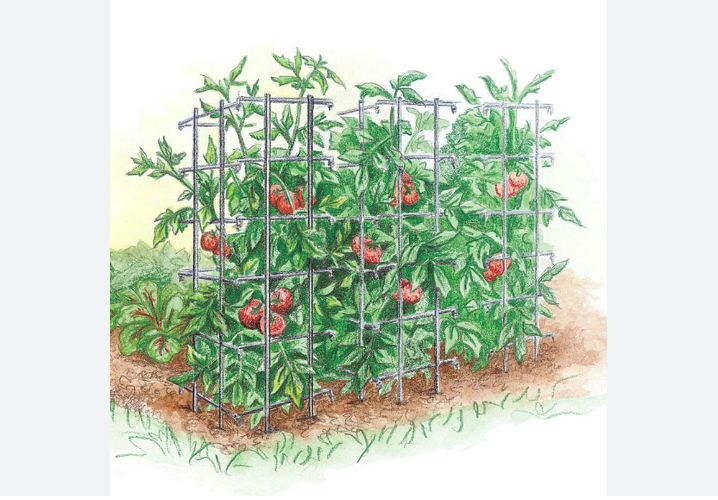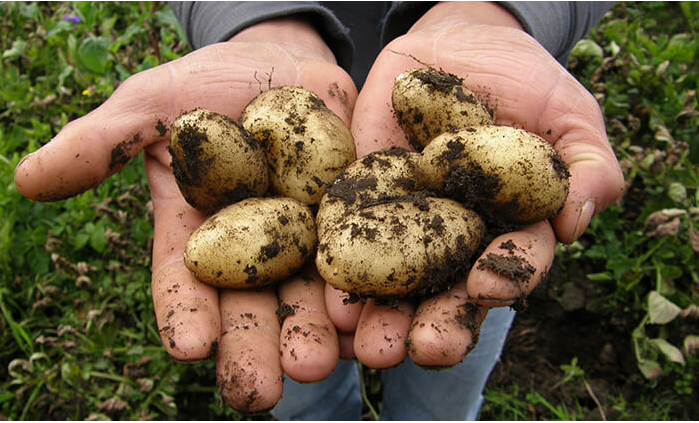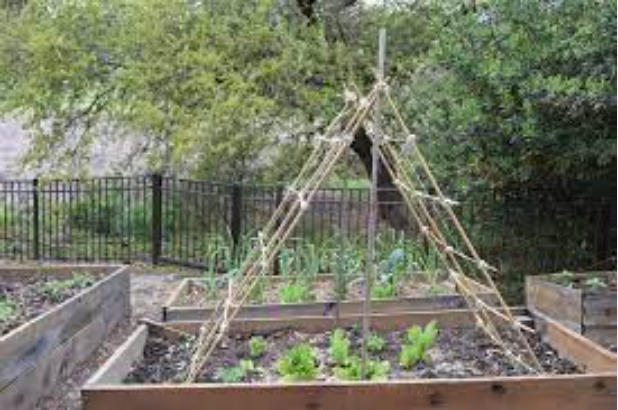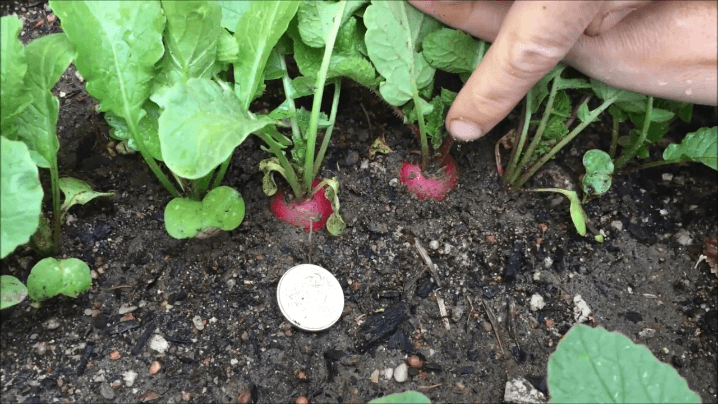Tomato Cages – Introduction
Tomato cages are the type of cages that help a tomato plant stay upright and produce the best crop while supporting the plant. Tomatoes spread faster than other plants; when they bear fruit, the vines touch the ground due to their weight. As a result of this process, fruit can get a few diseases from the containments in the soil. Thus, the diseases leave a negative impact on your plant.
The best solution for your plant is to help it stay upright all season. There are many ways to support your tomato plant, one of which is using a cage.
Tomato Cage – Benefits
We must address the fundamental point before getting details about the tomato cage. There are many benefits of using a tomato cage. Once we know those benefits, we’ll have a concrete view of using these cages.
Structure and Support
Tomatoes are the most prone plants to sprawling. Sprawling is a process in which the roots and vines of a plant spread out in irregular ways on the ground. This spreading out in untidy ways is the basic step that has a worse impact on the plant’s life. Without a plan, a tomato spreads its branches on the ground. After the sprawling act, branches on the ground also become a worse situation for the plant.
Most new farmers and gardeners must be aware of these two points. Thus, despite all the suitable climatic conditions, their plants get diseases and produce less-than-average crops. Along with taking care of the plant, a tomato cage helps you protect the plant from sprawling and soil contact. These cages are ideal for keeping the plant’s branches and stems off the ground.
Air Circulation
Air circulation is one of the most vital but neglected points for a plant’s health. Without the required air, a plant will not have a mature life. Without air circulation, the humidity level around the plant increases. Thus, we must know this humidity level and keep watering the plant. The overexcessive water level causes the plant to get diseases.
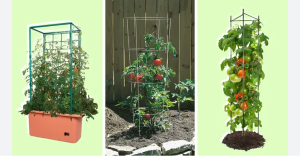
best tomato cages
If your plant fights off against diseases during humidity, there are other effects on the p plant. Without drying off, a plant can’t complete the photosynthesis process. Air circulation is essential for the plant to get the food it needs to grow. Without complete photosynthesis, your plant will grow weekly without primary immunity and strength.
As you get a tomato cage for the plant, its branches and vines will get untangled. This way, your plant will have room to breathe due to better air circulation. Not only will the better airflow dry off the plant and moisture, but it will also battle fungal diseases.
Easier Harvesting
Let’s assume you are taking care of the plant for the whole season. Everything goes perfectly for you. Then, during the harvesting season, the plant gets damaged. This damage is primarily due to harvesting the fruits in tangled branches. This situation affects the other branches and leaves as well. It is best to plan for harvesting season.
The best way to plan for harvesting season is to get tomato cages. We know a cage gives structure to the tomato plant. This way, your plant is not tangled, and the fruits are healthy and separate from other branches. Thus, when the crop harvest is upon us, we can pick each fruit without disturbing the different fruits.
Space Efficiency
If you have a smaller area for the plantation, you won’t grow a tomato plant. This hesitation to get tomatoes is primarily due to a lack of space. We know tomatoes spread a lot in the ground, thus reducing space for other plants. But after getting the best tomato cages, you won’t think about space problems anymore.
Types of tomato cages
Tomato cages are available in various shapes and sizes. Before purchasing a cage, we must check if it suits our crop. Each type of cage is suited for a different tomato crop, so we aim to get the best tomato cages for our crop. These cages are available in various shapes. Some are square tomato cages, while others are circular rings and cones.
These cages are available in different varieties, from two to three feet wide. Also, when it comes to the height of these cages, they range from four to six feet in height. Some of the cages come with adjustable bars. You can change the position of these horizontal bars depending on the height and size of your plant. This way, you can move them up the vertical sales, extending to the bottom.
When looking at the best tomato cages, some are available in foldable settings, which are best for storage. Further, there are cone-shaped cages. Although these cages take up the maximum room in your garden, they are cost-effective. When using the tomato cage, ensure that you have the correct position so your plant isn’t falling or collapsing over the cage.
Cages for Specific Tomato
Now that we understand these cages have different types, let’s move to the critical step. We must understand how to use a tomato cage. Each cage is made for its purpose, and we can’t use it for other types of tomatoes. Before getting a cage, check the type of your tomato crop and compare it with the following information.
Cages for Determinate Tomato
A tomato plant also comes in two types. One of those is a determinate tomato. It is the tomato plant that produces all its seeds at once. This situation of the plant increases the load on the cage at the same time. Thus, your cage needs to have matching strength and support.
Some of the determinate tomato types have a habit of growing bushy vines. The plant supports the fruit with these bushy vines. For this tomato plant, your cage should be made with sturdy materials. The ideal cage here is a square tomato cage, four feet in height and two feet in width. This type of cage helps with air circulation in the plane.t
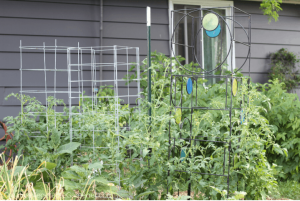
tomato plant support
Cages of Indeterminate Tomato
Indeterminate tomatoes keep producing fruit all season, and we harvest them as they ripen. This consistency reduces the weight of the plant. On one hand, the plant has low weight, but its vines grow to a length of 10 feet. Thus, we now will need a structure that supports the long vines. For an indeterminate tomato plant, get an adjustable support cage. The Ideal dimension of the cage is six feet tall in a cone-shaped cage while three feet in diameter. The adjustable support helps you support the plant in the most needed area.
Potted Tomato Cages
If you plant your tomato in a pot, limit yourself to a few options. You will need to compare the size of the cage with the pot. Thus, the cage provides support to tomato plants. Cages are available as small as 15 inches in height and six inches in diameter. But before making the purchase, ask an expert about the plant’s mature size. This way, your plant won’t climb over the cage or put extra pressure on them.
When to add Tomato Cages
We should address a vital point now that we have learned much about the cages. What is the time in a plant’s life when we should add a cage to the tomato plant? The exact time for adding cages differs depending on your tomato plant. Add a cage from the beginning if you add the tomato in a pot. After ensuring you have the correct cage per the plant’s size, add it to the pot. This way, once the plant matures enough, the roots and branches will be easy to maintain as per the cage.
But, this time of adding tomato differs in a garden. Instead of placing the cages right after planting the tomato, we must wait a while. An ideal time for installing the tomato cage is two to three weeks after planting the tomato seed. This moment is when plants enter their vegetative growth period, and the vines proliferate. During this time, roots start spreading out. Installation of a cage before this growth will help contain the plant’s roots. After these few weeks, roots will spread; thus, installation of the cages will be difficult.
How to use a tomato cage?
The most important part of tomato cage information is its method of use. Without learning how to use a tomato cage, our information about them is irrelevant. Here is detailed information about how to use a tomato cage.
Selecting the Cage
The basic part of using a cage is to go to the market and select one. Cage selection isn’t like shopping for any other item. We can’t base our choice on the color and shape of the cage. It is better to take advice from the experts before buying a cage. The shop owners also have information about their products. Share your plant about the tomato plan, and they will show you the exact item you require.
Cage Position
The position of your cage should be accurate. So when the tomato plant grows, you can contain the roots and vines in the cage. The position of the cage is different for a pot and a plant in the garden. No matter where your plant is, its position should be with the seedling of the plant in the center.
The Installation
Now, set the cage in an accurate position and firmly apply pressure on the top of the cage. While applying pressure, ensure that you push the stakes in the soil. Keep using the pressure till the stakes are eight inches under the soil. You will see extensions on the bottom of the cage. These extensions can go in the soil without any difficulty. If you face any resistance, stop applying the pressure on the top. Now, put some force on the lower part of the cage. This way, you won’t reshape the cage. If the force on the lower part doesn’t work, check for resistance in the soil by hand.
Vines Arrangement
As the vines and branches start developing, we need to arrange them according to our cage. Take the first branching vine and find a well-developed leaf on either side of the stem. Now, carefully put a tie under the leaf. This will make a V-shaped pattern. But leave enough space for the vines to grow as they get thicker over time.
While putting the knot on vines, ensure you are not stretching them. Instead, follow the natural growth pattern of the plant. Let the plant follow its natural growing pattern. Afterward, you can continue to tie the knots.
More info: How to Fall Vegetables Plant during the Fall, Details and Intro
Final Thoughts
For a few people, tomato cages are a waste of time. But we now do understand that they are valuable for gardening. If you are a new gardener, don’t waste your time on other techniques. Use a tomato cage as it can help you wisely use your garden space.
FAQs
Following are the few commonly asked questions about tomato cages.
1- What is a tomato cage?
A tomato cage is a structure that supports the tomato plant to stay upright and prevents it from sprawling.
2- What are the tomato cages made up of?
Tomato cages are made by using wire to provide strength to the structure.
3- When should I put a tomato cage around my plant?
If you are using a pot, it is better to add the cage before planting the tomato plant. While in the garden wait for two to three weeks after planting.

